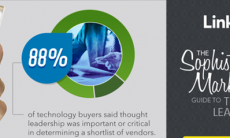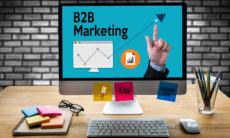Most B2B lead generation campaigns involve multiple touches via multiple media channels. But how do you decide which media are optimal, and more to the point, how they work together to generate a qualified lead? It’s an iterative process. The first step is to establish with the sales team their monthly (or weekly, or quarterly) requirements for the number of qualified leads per rep—or by product, or by territory, or whatever is needed. Then, plan carefully the media mix that will feed the machine.
The media mix is a function of several variables, which you need to research:
- The ROI each medium can deliver, based on your company’s experience and industry benchmarks.
- The medium’s availability. Some media channels are scheduled intermittently. Consider when the trade shows and conferences in your industry are scheduled throughout the year. Other media may be only intermittently profitable. Content syndication, for example, is priced all over the place. Can you get enough leads from this channel to satisfy your requirements?
- The campaign’s time horizon. Digital media are faster to produce than direct mail. Business events can take months of planning before a lead emerges.
- Lead flow requirements. For example, sales may need more leads in the first and fourth quarters.
- Your business objectives. Are there particular geographies or industry targets you need to reach?
- Media effectiveness. Media come and go, in terms of their power to attract business buyers. Thank goodness there are new and exciting B2B media arriving on the scene regularly.
Enter your research data into a spreadsheet, and play around with it as an iterative planning tool. The table here presents a simple hypothetical example of how this can work.
Calculating Cost Per Lead by Medium
| Medium | Volume | Cost | Response rate | Gross inquiries | Qualification rate | Qualified leads | Cost/lead |
|
Direct mail |
30M |
$1500/M |
2% |
600 |
25% |
150 |
$300 |
|
|
40M |
$300/M |
0.5% |
200 |
20% |
40 |
$300 |
| Trade show | — |
$15,000/ event |
— | 400 | 10% | 40 | $375 |
|
Display |
5M |
$50/M |
0.5% |
25 |
40% |
10 |
$25 |
|
SEM |
— |
$1/click |
— |
100 |
10% |
10 |
$10 |
You can expand this spreadsheet to include other key variables, like timing, geographic territory requirements, and your ROI hurdle rates.
You are likely to end up with some very inexpensive leads in your mix, and that’s a blessing. The unfortunate thing is that, typically, these leads are unlikely to be enough to meet your revenue targets or support your sales force’s quota. So you’ll need to select several options, ranking them by ROI, availability, and your lead flow criteria, to come up with the optimal mix.
Multiple media working together generate better results than single media, with one big proviso: the messages must be consistent across media. An inconsistent message can cause confusion and erode the value of your brand.
Pulling this off is not always easy, especially in larger companies. You have to coordinate functional silos with their own managers, vocabularies, cultures, budgets, and objectives. This requires tenacity, a focus on the customer experience, and support from senior management. But the payoff is colossal. All outbound contacts with customers, whether they are customer service messages or even billing-related messages, can potentially be harnessed for the lead effort.
A simple technique is to put the company URL on all messages received by customers. The same principle applies to customer touch points that are less obviously part of marketing communications, like packaging and invoices—any point where the customer comes in contact with the product or service. Be sure you have a gated offer prominently positioned on the home page.
Similarly, some ongoing marketing communications channels can be designed to support lead generation. To stimulate your thinking:
- Ensure that all brand-awareness advertising includes an offer, a call to action, and a response device.
- Include a white paper offer, with response instructions, such as an 800 number or a web form URL, in your press releases.
- When executives give speeches, invite your customers and prospects to attend.
Lead generation can harness all kinds of media channels, if you give it some thought and planning.







